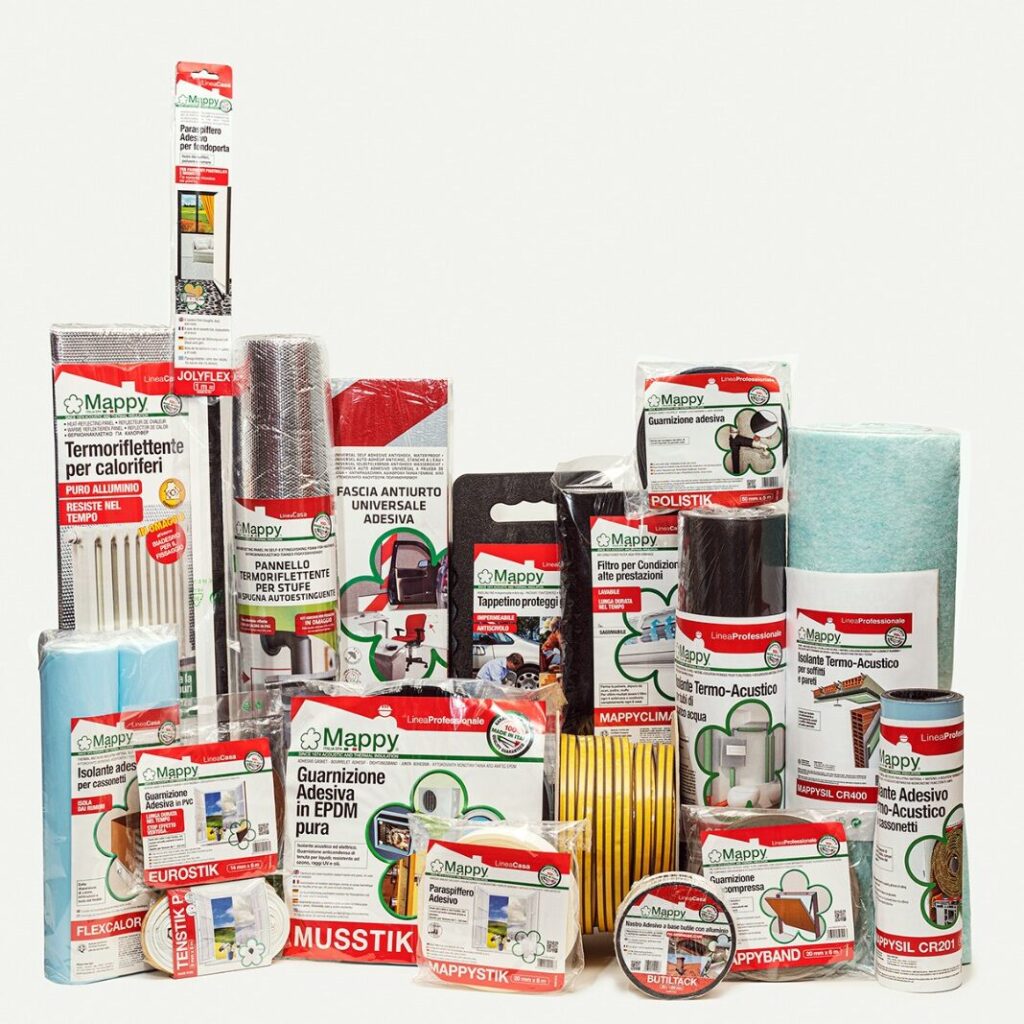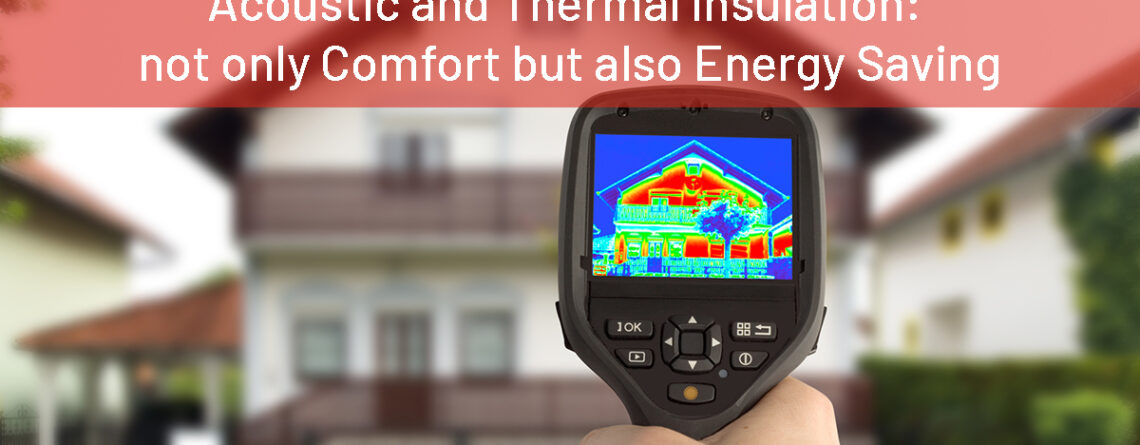Acoustic and Thermal Insulation: not only Comfort but also Energy Saving
Not everyone knows that solutions for thermal and acoustic insulation, as well as being applied to improve living comfort, are also suitable to counteract thermal dispersion and make homes more energy efficient, allowing a considerable saving of energy and a consequent reduction of costs.
Thermal dispersion: what are the main building weaknesses

Thermal dispersion is the main phenomenon that causes the excessive increase in energy consumption as, if not properly treated, does not allow to maintain constant the internal temperature of the apartments, causing increases or decreases even by a degree in less than an hour (depending on the season and the number of points affected by thermal dispersion), thus requiring the continuous ignition of heating or cooling systems.
To determine with precision the points of the building most affected by the phenomenon of thermal dispersion, the cd. thermal bridges, is not an easy operation. To facilitate the identification is recommended the use of thermal cameras, which allow to scan the entire house in search of areas with thermal imbalances.
However, when no technical tools are available to identify thermal bridges, it is advisable to start from the points where it is more common to find thermal dispersions, such as windows, shutter boxes, entrance doors, roofs and exterior walls, especially those exposed to the north.
Depending on the case, there are different types of interventions which allow to improve the energy efficiency of a house, increasing the level of thermal insulation of the apartment. One of the best-known solutions is the thermal coat, which consists in laying thermal insulation panels inside or outside the building. This solution, although the most effective, is also the most expensive and invasive, considering the high amount of work and materials involved in the intervention.
The alternative “DIY” for the insulation of the housing structure is the application of specific insulating products directly near the thermal bridges, without undertaking invasive and onerous interventions requiring long times of realization. This type of solution, even if not performing well like the first one, leads in most cases to a drastic decrease of the phenomenon of thermal dispersion, with the consequent economic saving. It must be also considered that, in the presence of an insufficient degree of thermal insulation of common thermal bridges, any intervention of thermal coat would be affected by the presence of air currents.
The importance of gaskets and thermal insulation materials for energy saving at home

The use of gaskets to limit heat loss is the simplest and fastest solution. In fact, on the market there are available many types of seals that can be applied inside an apartment on doors, windows and shutter boxes, without necessarily requiring the application by professionals.
Other solutions particularly suitable as thermal insulators are the door end rods, which, in addition to having a thermal function avoiding the passage of hot and cold air currents and dust infiltrations, also perform an acoustic function, insulating from outside noise and vice versa. Even the thermo-reflective panels are very useful for energy efficiency, reflecting the heat of the heaters and avoiding dispersion through the wall.
In general, the most recommended solutions are those which, in addition to having a high degree of thermal insulation, have sound insulation characteristics, thus having the dual function of energy efficiency and improvement of the acoustic comfort of living environments.
Fonte: a cura di Mappy Italia SpA, info@mappyitalia.com
© RIPRODUZIONE RISERVATA





